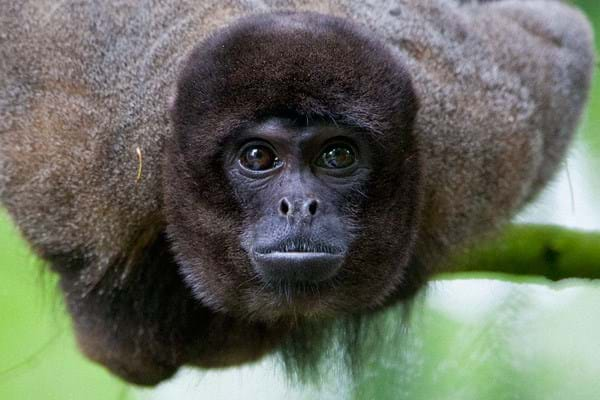Apenheul uses functional and analytical cookies to analyse the visiting behaviour on this website and to ensure optimal usability. We also use tracking cookies that can be processed to send you information that matches your personal preferences and settings. Please view our Privacy Statement for more information. If you would like to know which cookies we place, please have a look at our cookie overview. In order to use tracking cookies, we need your permission. There are no consequences for the functioning of the website if you do not grant permission. Do you agree to the use of tracking cookies?
The Apenheul concept
The concept was simple: people have more fun with animals when the animals are having a good time and can do their own thing. So instead of putting primates in cages and behind bars it would be better to have them in large, green, natural habitats in a wooded area.
Apenheul opened on 12 July 1971 as a small but revolutionary animal park.
Apenheul was born
On 12 July 1971, Wim Mager made his dream a reality. The park started with some woolly monkeys, some marmosets and a pair of spider monkeys. The park was small, but revolutionary and the concept worked well. The monkeys had children and the visitors really enjoyed the experience. Reason enough to expand and to start introducing more primate species.
The first gorilla babies
The first gorillas arrived in 1976. Three years later, the first gorilla baby was born. The babies were raised ‘normally’ by their mothers – and that is special in captivity.
Apenheul began receiving more and more visitors. Primatologists and zoo workers started coming from all over the world to learn from this unique setup – and they still come today.
Setback
A major setback occurred in 1981. The cabin in which Apenheul had started burnt down. 38 tamarins and 8 spider monkeys lost their lives. A spider monkey named Pepi is one of the survivors who still lives at the park.
Apenheul overcame this setback and built a new main building. New primate species were also introduced to the park, such as gibbons, Barbary macaques and Lion tamarins.
In 1986, Apenheul became a foundation, with nature education and conservation as its main objectives.
The reintroduction of lion tamarins to the wild
In the early eighties and nineties, Apenheul successfully participated in a Golden Lion tamarin reintroduction programme. For the first time in history, a Dutch zoo released animals that were born in captivity into the wild. In Brazil, there are now direct descendants of lion tamarins who began their lives at Apenheul.
Apenheul Primate Conservation Trust
In 1994, the Apenheul Primate Conservation Trust (APCT) was established. Apenheul actively participates in nature conservation worldwide. We offer financial support, manpower and initiate our own (successful) projects.
The bonobos arrived in 1996. Apenheul is the only Dutch zoo with this type of hominid species.
Wim Mager's depature
Wim Mager left for France in 1997. He founded a second park there ‘La Vallée des Singes’ along the same conceptual lines.
Arrival of the orangutans
Before the arrival of the orangutans in 1999, Apenheul designed a special habitat for these solitary animals.
Wim Mager dies
Eleven years later, on 23 March 2008, Wim Mager died at the age of 67. The way in which primates are kept and seen in zoos would never have come as far as it has today without Wim Mager. The entire zoological community and Apeheul itself, of course, will always be grateful to Wim Mager for this achievement.
Opening De St@art
On 8 June 2010, Princess Máxima opened De St@art, a venue on the edge of Apenheul and Stadspark Berg & Bos. This new building winds its way through the landscape like a tail. The building is CO2-neutral and is, among other things, the site of Apenheul’s offices. But, above all, it is a fantastic meeting and conference location with which Apenheul collaborates to offer possible activities for business groups.
The best day out in the Netherlands
In 2016, a long-coveted dream came true: Apenheul was declared by the Dutch public to be the best day out in the Netherlands! And we are extremely proud to have received this recognition. You could even say we’ve ‘gone ape about it’!

